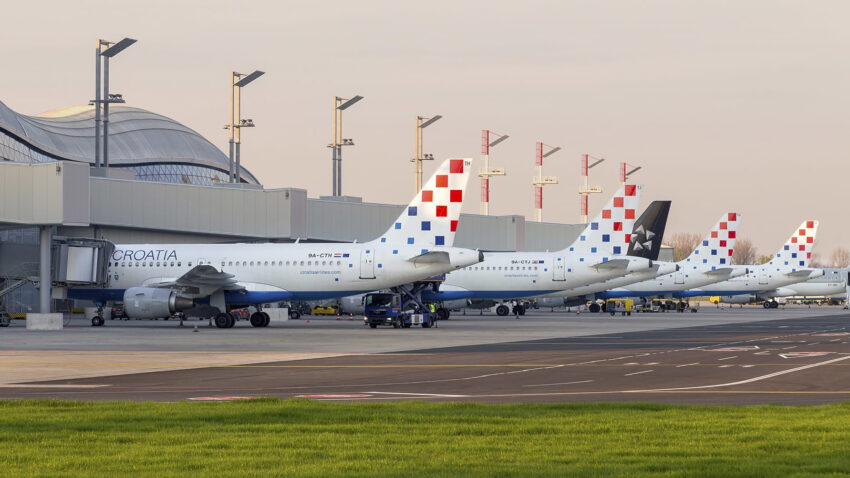Wednesday, March 27, 2024

The seamless operation of the global airline industry is a marvel of modern engineering and coordination, with Air Traffic Control (ATC) integration playing a pivotal role in ensuring safety, efficiency, and reliability in air travel. As the nexus between air travel’s operational heartbeat and its execution in the skies, ATC integration is an indispensable aspect of the airline industry, guiding planes from departure to destination with precision and care.
The Essence of ATC Integration
ATC integration involves the comprehensive coordination between airlines and air traffic control authorities to manage the flight paths of thousands of aircraft daily. This system ensures that aircraft are kept at safe distances from each other, navigated efficiently through various airspaces, and assisted during takeoff and landing—the most critical phases of a flight. The complexity of integrating ATC operations with airline schedules is monumental, considering the variables of weather, aircraft performance, and the varying airspace regulations across the globe.
Technological Underpinnings
The foundation of effective ATC integration lies in sophisticated technology. Radar systems, satellite navigation, and computer algorithms work in tandem to monitor aircraft positions in real time, predict potential conflicts, and assist in decision-making processes. Advanced software solutions, such as the Automatic Dependent Surveillance-Broadcast (ADS-B), enhance visibility by allowing planes to broadcast their location to ATC and other aircraft, paving the way for more efficient route planning and spacing.
Furthermore, the introduction of Artificial Intelligence (AI) and Machine Learning (ML) technologies into ATC systems promises to revolutionize how air traffic is managed. These technologies can analyze vast amounts of data to predict traffic patterns, optimize flight routes, and even anticipate and mitigate potential disruptions, further enhancing the safety and efficiency of air travel.
The Human Element
Despite the technological advancements, the human element remains at the core of ATC integration. Air traffic controllers are highly trained professionals responsible for the safety of every flight. They must make split-second decisions, communicate effectively with pilots, and manage unexpected events such as emergency situations or sudden weather changes. The integration of ATC systems provides these professionals with the tools they need to perform their duties effectively, but it’s their expertise and judgment that ultimately ensure the smooth operation of air traffic.
Challenges and Solutions
One of the major challenges in ATC integration is managing the ever-increasing volume of air traffic. As the demand for air travel continues to grow, the skies become more crowded, putting additional pressure on ATC systems and controllers. To address this, the industry is moving towards more automated and scalable solutions, such as NextGen in the United States and SESAR in Europe, which aim to modernize the ATC infrastructure, introducing more efficient route management, and reducing delays.
Another challenge is the need for global harmonization of ATC operations. With each country having its own regulations and systems, international flights must navigate a complex web of ATC jurisdictions. Efforts by the International Civil Aviation Organization (ICAO) to standardize procedures and technologies are crucial in creating a more integrated and efficient global ATC system.
The Impact of ATC Integration on the Airline Industry
The benefits of effective ATC integration are manifold. For airlines, improved efficiency translates into fuel savings, reduced operational costs, and the ability to offer more competitive prices to passengers. For passengers, it means safer flights, fewer delays, and a smoother travel experience. Moreover, by optimizing flight paths, ATC integration contributes to reducing the environmental impact of air travel, a crucial consideration in an era increasingly focused on sustainability.
Looking Ahead
The future of ATC integration in the airline industry is intrinsically linked to ongoing technological advancements and international collaboration. As we look towards innovations like unmanned aerial vehicles (drones) entering commercial airspace and the potential for supersonic travel, the role of ATC integration will only grow in importance. The challenge will be to continue evolving and adapting these systems to ensure they can support the next generation of air travel, without compromising on the safety and efficiency that have become the hallmarks of today’s airline industry.
Air Traffic Control integration is a critical component of the airline industry, enabling the safe, efficient, and reliable movement of aircraft around the globe. Through a combination of advanced technology, skilled professionals, and international cooperation, ATC systems manage the complex dynamics of modern air travel. As the industry faces future challenges, including increasing traffic volumes and the need for sustainable operations, the evolution of ATC integration will remain at the forefront of ensuring that the skies remain open and accessible for all.
Sunday, April 28, 2024
Sunday, April 28, 2024
Sunday, April 28, 2024